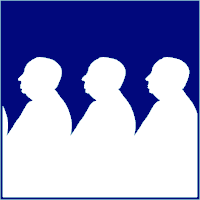US Department of Defense
Joint Artificial Intelligence Center From Wikipedia, the free encyclopedia Jump to navigationJump to search The Joint Artificial Intelligence Center (JAIC) is an American organization on exploring the usage of Artificial Intelligence (AI) (particularly Edge computing), Network of Networks and AI-enhanced communication for use in actual combat.[1][2][3][4] It is a subdivision of the United States Armed Forces and was created in June 2018. The organization's stated objective is to "transform the US Department of Defense by accelerating the delivery and adoption of AI to achieve mission impact at scale. The goal is to use AI to solve large and complex problem sets that span multiple combat systems; then, ensure the combat Systems and Components have real-time access to ever-improving libraries of data sets and tools."[2] Contents 1 History 2 Technology 2.1 Neuromorphic computing 2.2 Network of networks 3 List of directors 4 References History JAIC was originally proposed to the United States Congress on June 27, 2018.[5] Throughout 2020, JAIC started financially engaging with the AI industry for the development of specific applications.[6][7][8] Current proposals for JAIC include giving it the authority as a financial entity to acquire its own technology, and elevating its position to be under the Deputy Secretary of Defense.[9][10][11] Technology Neuromorphic computing JAIC's primary area of interest is Edge computing, as even more sensor technologies are being added to weapon systems and military vehicles. The edge processors that will be used are Neuromorphic processors that will perform neural network computations on the sensor itself without having to send the data to a central processor, thus increasing the robustness of the combat network.[4] JAIC plans to access the U.S. commercial sector and academia to recruit professionals in the fields of neuromorphic technology and AI safety.[12][13][14] Network of networks The Joint All Domain Command and Control (JADC2) is an initiative of the military's network of networks, as each branch of the US Armed Forces (Army, Air Force, Navy, Marines and Coast Guard) intends to have its own communications network. The JADC2 project would integrate all those networks into a larger network on all spatial scales. ′Every sensor, every shooter′, being the tagline.[15][16] List of directors No. Director Term Service branch Portrait Name Took office Left office Term length 1 John N.T. Shanahan[17] Lieutenant General John N.T. Shanahan[17] December 2018 1 June 2020 ~1 year, 183 days Mark of the United States Air Force.svg U.S. Air Force - Nand Mulchandani[18] Nand Mulchandani[18] Acting 1 June 2020 1 October 2020 122 days SES Emblem.svg U.S. Senior Executive Service 2 Michael S. Groen Lieutenant General Michael S. Groen 1 October 2020 Incumbent 121 days Emblem of the United States Marine Corps.svg U.S. Marine Corps
